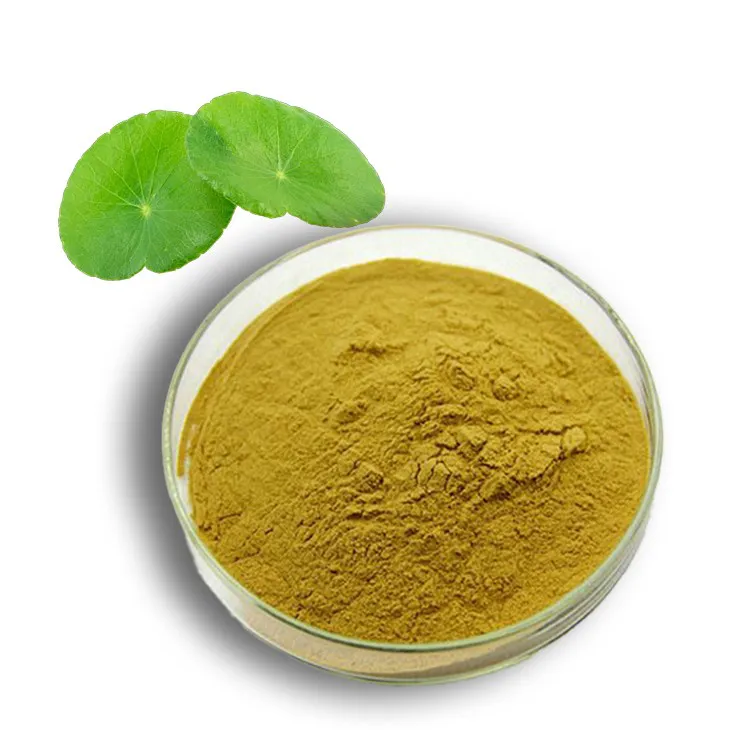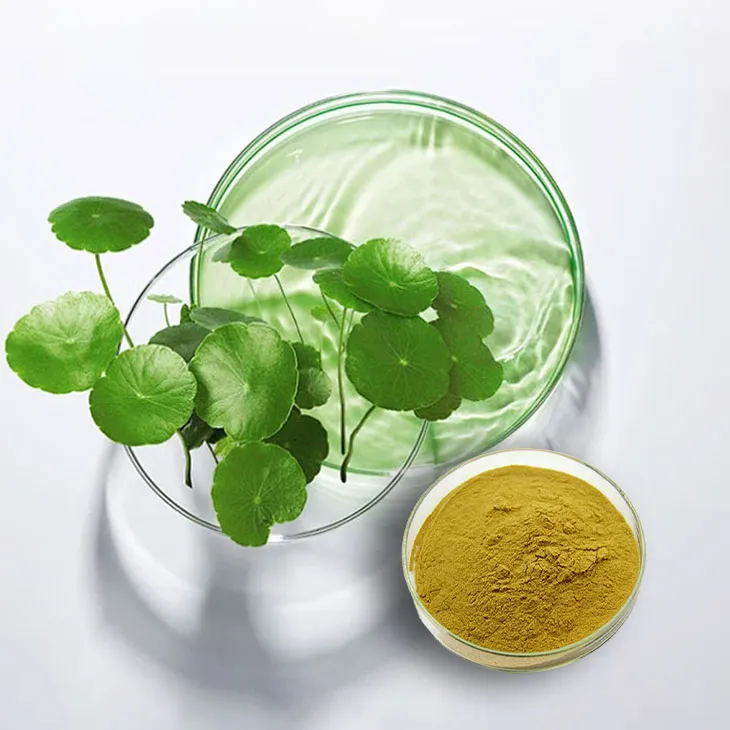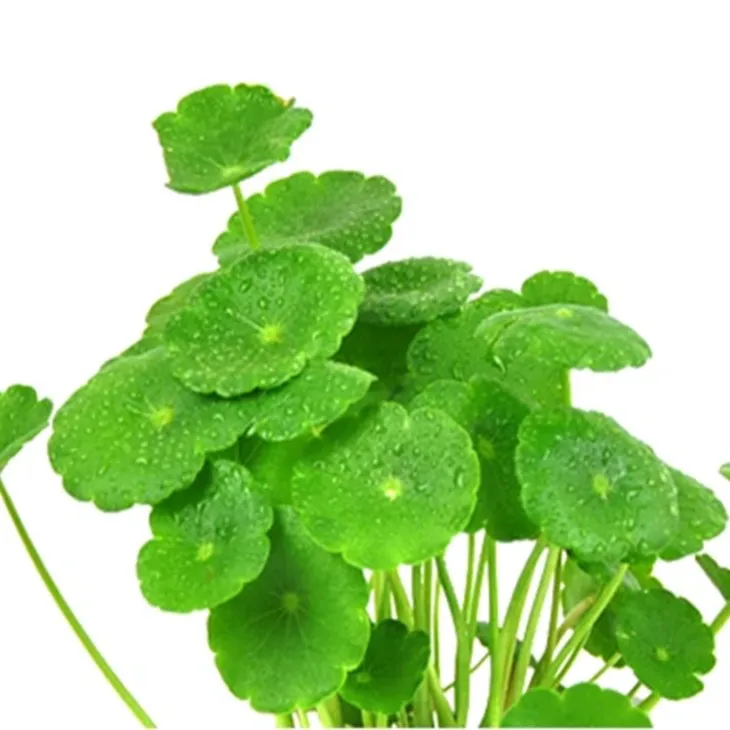- 0086-571-85302990
- sales@greenskybio.com
Extraction process of Centella asiatica extract.
2024-11-28

1. Introduction
Centella asiatica, also known as gotu kola, has been used in traditional medicine for centuries. Its extract is rich in bioactive compounds such as triterpenoids, flavonoids, and phenolic acids, which possess various beneficial properties including anti - inflammatory, antioxidant, and wound - healing effects. The extraction process of Centella Asiatica Extract is a complex yet fascinating procedure that requires precision and attention to detail at every step.

2. Plant Collection
2.1 Source of Plants
The first step in obtaining Centella Asiatica Extract is the collection of high - quality plants. These plants are typically sourced from their natural habitats. Centella asiatica thrives in moist, shady areas such as wetlands, riverbanks, and forest floors. It is crucial to ensure that the collection is done sustainably to preserve the natural population of the plant and its ecological balance.
2.2 Selection CriteriaWhen collecting Centella asiatica plants, certain criteria need to be met. Only healthy plants should be selected. This means looking for plants with vibrant green leaves, without any signs of disease, pest infestation, or physical damage. The age of the plant can also be a factor, as younger plants may have different chemical compositions compared to more mature ones. Selecting the right plants at the source is fundamental to obtaining a high - quality extract in the later stages of the process.

3. Pre - treatment
3.1 Cleaning
Once the Centella asiatica plants are collected, they need to be pre - treated, starting with cleaning. The plants often have external debris or soil particles clinging to them. Cleaning is essential to remove these contaminants as they can interfere with the extraction process and may introduce impurities into the final extract. This can be done by gently washing the plants with clean water. A mild detergent may be used in some cases, but it must be thoroughly rinsed off to avoid any residue remaining on the plants.
3.2 Dehydration3.2.1 Reasons for Dehydration
After cleaning, the plants are dehydrated. Dehydration serves multiple purposes. Firstly, it reduces the moisture content of the plants, which helps in their long - term storage. Secondly, it makes the plants more brittle, facilitating the subsequent pulverization process. By removing the water, the chemical stability of the plant compounds may also be enhanced during the extraction process.
3.2.2 Dehydration MethodsThere are different dehydration methods that can be applied. One common method is air - drying. This involves spreading the plants out in a well - ventilated area away from direct sunlight. Another option is using a dehydrator, which can control the temperature and air circulation more precisely. The choice of dehydration method may depend on factors such as the scale of production, available resources, and the specific requirements of the extraction process. For example, in a small - scale laboratory setting, air - drying may be sufficient, while in a large - scale industrial production, a dehydrator may be more efficient.

4. Pulverization
Once the Centella asiatica plants are dehydrated, they are pulverized into a fine powder. Pulverization is an important step as it increases the surface area of the plant material, which in turn enhances the efficiency of the extraction process. This can be achieved using a mortar and pestle for small - scale operations or a mechanical grinder for larger quantities. The powder should be as fine as possible to ensure maximum contact between the plant material and the extraction solvent.
5. Extraction
5.1 Selection of Extraction Solvent
The extraction phase is a crucial part of obtaining Centella Asiatica Extract. One of the key decisions is the selection of the extraction solvent. Organic solvents like ethyl acetate are often preferred due to their ability to dissolve a wide range of bioactive compounds present in Centella asiatica. Aqueous solutions can also be used, especially when targeting water - soluble components of the plant. In some cases, a combination of organic and aqueous solvents may be employed to extract a more comprehensive range of compounds.
5.2 Extraction Process Parameters5.2.1 Agitation Speed
During extraction, the agitation speed plays an important role. Proper agitation helps to ensure that the solvent comes into thorough contact with the pulverized plant powder, facilitating the dissolution of the desired compounds. If the agitation speed is too slow, the extraction may be incomplete as the solvent may not reach all parts of the plant material. On the other hand, if it is too fast, it may cause splashing or emulsification, which can also affect the extraction efficiency. A moderate agitation speed is usually optimal, and this may need to be determined experimentally depending on the extraction setup.
5.2.2 TemperatureTemperature is another critical factor in the extraction process. The extraction can be carried out at room temperature, but in some cases, a slightly elevated temperature can increase the extraction efficiency. Temperatures ranging from 50 - 70°C are sometimes used. However, care must be taken not to exceed a certain limit as high temperatures can cause degradation of some of the bioactive compounds in Centella asiatica. The optimal temperature needs to be balanced to ensure maximum extraction of the desired compounds while maintaining their integrity.
5.2.3 Extraction TimeThe extraction time also has a significant impact on the quality and quantity of the extract obtained. It could range from a few hours to a day, depending on the nature of the plant material, the solvent used, and the extraction conditions. A shorter extraction time may result in incomplete extraction, while an overly long extraction time may lead to the extraction of unwanted compounds or degradation of the desired ones. Regular sampling and analysis during the extraction process can help to determine the optimal extraction time.
6. Filtration
After the extraction process, filtration is carried out to isolate the extract. Filtration is necessary to separate the extract - containing solvent from the remaining plant debris and undissolved solids. There are different types of filtration methods that can be used. Simple gravity filtration can be employed for small - scale operations, using filter paper in a funnel. For larger - scale production, vacuum filtration or membrane filtration may be more appropriate. These methods can provide faster and more efficient filtration, ensuring a clear extract free from solid impurities.
7. Concentration
7.1 Evaporation under Reduced Pressure
Following filtration, further processing like evaporation under reduced pressure may be done to concentrate the extract and remove the solvent. Evaporation under reduced pressure is a preferred method as it allows for the removal of the solvent at a lower temperature compared to normal evaporation, which helps to preserve the integrity of the bioactive compounds in the extract. This process involves placing the filtered extract in a rotary evaporator or a similar device where the pressure is reduced, and the solvent is evaporated off, leaving behind a more concentrated form of the Centella asiatica extract.
7.2 Final ProductThe end result of this entire extraction process is the Centella asiatica extract. This extract can be in the form of a viscous liquid or a dried powder, depending on the final application and storage requirements. It is then ready for further analysis, quality control, and use in various products such as cosmetics, pharmaceuticals, and dietary supplements.
FAQ:
What are the main steps in the extraction process of Centella asiatica extract?
The main steps include collecting high - quality Centella asiatica plants from suitable habitats, pre - treatment (cleaning and dehydration), pulverizing the dried plants into powder, extraction using organic solvents or aqueous solutions with proper proportion, considering factors like agitation speed, temperature and extraction time during extraction, filtration to isolate the extract and further processing like evaporation under reduced pressure to concentrate and remove the solvent.
Why is pre - treatment necessary before extracting Centella asiatica?
Pre - treatment is necessary because cleaning can remove external debris or soil particles clinging to the plants. Dehydration is also important as it prepares the plants for pulverization and subsequent extraction steps.
What kind of solvents can be used in the extraction of Centella asiatica extract?
Organic solvents like ethyl acetate or aqueous solutions can be used as extraction media in the extraction of Centella asiatica extract.
How does temperature affect the extraction process of Centella asiatica extract?
Temperature, which can range from room temperature to a slightly elevated temperature like 50 - 70°C in some cases, affects the extraction process. Different temperatures may influence the solubility of the active compounds in the solvent and the rate of extraction.
What is the purpose of filtration in the extraction of Centella asiatica extract?
The purpose of filtration in the extraction of Centella asiatica extract is to isolate the extract from the mixture of powder and solvent, separating the desired extract from other solid particles or impurities.
Related literature
- Centella asiatica: A Review of Its Ethnobotany, Phytochemistry, Pharmacological Properties, and Clinical Applications"
- "Optimization of Centella asiatica Extract Production: A Comprehensive Study"
- "The Chemistry and Bioactivity of Centella asiatica Extracts: Current Research Trends"
- ▶ Hesperidin
- ▶ citrus bioflavonoids
- ▶ plant extract
- ▶ lycopene
- ▶ Diosmin
- ▶ Grape seed extract
- ▶ Sea buckthorn Juice Powder
- ▶ Beetroot powder
- ▶ Hops Extract
- ▶ Artichoke Extract
- ▶ Reishi mushroom extract
- ▶ Astaxanthin
- ▶ Green Tea Extract
- ▶ Curcumin Extract
- ▶ Horse Chestnut Extract
- ▶ Other Problems
- ▶ Boswellia Serrata Extract
- ▶ Resveratrol Extract
- ▶ Marigold Extract
- ▶ Grape Leaf Extract
- ▶ blog3
- ▶ blog4
-
Supplier of Hedyotis diffusa extract.
2024-11-28
-
Standard - process stevia extract.
2024-11-28
-
The Best Apple Cider Vinegar Powder in 2024.
2024-11-28
-
The Maca Extract Brands Most Worth Buying.
2024-11-28
-
The best cactus extract on the market.
2024-11-28
-
Yam Extract
2024-11-28
-
Senna Leaf Extract
2024-11-28
-
Boswellia Serrata Extract
2024-11-28
-
Black Garlic Extract
2024-11-28
-
Soy Extract
2024-11-28
-
Fig Extract
2024-11-28
-
Saffron Extract Powder
2024-11-28
-
Kelp Extract Powder
2024-11-28
-
Europen Bilberry Extract
2024-11-28
-
Moringa powder
2024-11-28





















